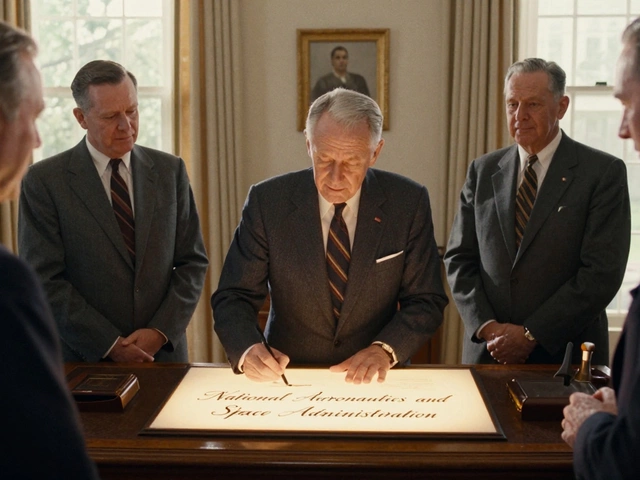Picture this: a product launch deadline is looming, half your team works remotely, and an unexpected glitch just popped up in the data. You’ve probably felt that twinge of panic, right? Collaboration is the lifeline in moments like these, turning chaos into progress. But what actually makes collaboration effective, especially when teams are scattered across time zones and backgrounds? Let’s get blunt—collaboration isn’t just about sharing files on Google Drive or giving a thumbs-up on Slack. There’s a science to what clicks and what crashes and burns. Companies that figure this out save money and, honestly, headaches. One Fortune 500 survey found that organizations with strong collaboration habits are five times more likely to be high-performing. Still, so many teams get the basics wrong, mixing up groupwork with real collaboration. It’s the difference between fighting over a single keyboard and writing a symphony together.
Trust: The Foundation of Collaboration
Everything starts with trust. If team members feel anxious that someone will take credit for their work or fear their opinions will get shut down, the group falls apart quickly. People simply won’t share bold ideas or ask for help, creating a loop of silence and half-hearted attempts. The 2023 Pulse of the Workforce Report showed that only 49% of global workers believe their organization nurtures trust between colleagues—so the struggle is real.
Now, trust doesn’t show up overnight. It builds through small, daily actions. When you admit a mistake, own up to missing a deadline, or share honest feedback, you chip away at the walls. I’ve seen this in my own life. My wife Suman always reminds me, “Mistakes mean you’re trying.” She’s right. Teams that accept mistakes as part of learning end up building psychological safety, the secret ingredient Google credits for their highest-performing teams. Sure, you don’t need to share your deepest fears over lunch, but basic transparency transforms the way people work together. Want to speed up the trust-building process? Try regular, quick check-ins or retrospectives after a project. Keep it simple: no jargon, no blame—just focus on what’s working, what’s not, and move forward.
Trust also means giving people room to do their work. Micromanagement kills collaboration faster than a slow WiFi connection. If you can’t let go, your team will too. Give some space, and skill-sharing flourishes. Don’t just take my word for it—a Harvard Business Review study noted that trust-heavy environments see a 50% higher productivity rate than low-trust teams. So, ask yourself: When was the last time you let someone run with an idea?
Communication: Clarity Over Noise
If trust is the bedrock, communication is the bustling highway sitting atop it. No one collaborates in a vacuum, and no one enjoys email ping-pong games that go nowhere. Communication is not just talking; it’s listening, clarifying, and giving feedback that matters. According to a Holmes Report, poor communication costs companies an average of $62.4 million annually in lost productivity. Hard to ignore, right?
Clear communication is like good WiFi—everything depends on it. Any collaboration tool is only as good as the messages you send across it. Know your audience and choose your words. When technical teams talk to marketing, for example, jargon gets lost in translation. I’ve learned this the hard way in Bangalore—if you want your message to stick, make it digestible. Visual aids, diagrams, or just picking up the phone can prevent hours of confusion.
Don’t forget about feedback. In great teams, feedback isn’t personal; it’s about improving together. The trick? Keep it timely and focused. Use frameworks like SBI (Situation, Behavior, Impact) so you don’t end up hurting egos. One quick tip: end every meeting with a round-robin—each person says what worked and what could be better next time. This keeps conversations real and actionable.
Let’s not skip the digital divide. Remote work can drop subtle hints, like “I’m busy” or “I’m not sure how to say this over chat.” Break this by making face time happen, either virtually or when possible, in person. The difference is in tone: a frown in an email often just means concentration in person! Bet you’ve misread a Slack message before— we all have.
To sum things up, communication should always be a two-way street: clear, consistent, and open for adjustment. Don’t just broadcast—invite response. That makes teamwork stick.

Diversity: Turning Differences into Strength
The best teams rarely look, think, or act the same. Diversity isn’t about hitting a quota—it’s the secret to unlocking creative solutions. Teams made up of people from different backgrounds, skill sets, and perspectives crush homogeneous teams when it comes to creative problem-solving. A McKinsey study from 2022 revealed that diverse teams are 35% more likely to outperform industry averages. This isn’t just a nod to fairness; it’s smart business.
Think about it: if everyone brainstorms the same way, you end up with stale ideas and groupthink. If one person loves data and another is great with people, you can design campaigns that not only make sense but actually resonate. In my experience, the best hacks come from the unlikeliest sources. I once watched a junior developer rework our project’s timeline because she’d handled a similar crisis at her family’s textile shop—skills transfer in unexpected ways.
Here’s another layer: diversity can be challenging. More opinions mean more conflict, and that’s OK. Managed well, conflict is the spark that lights up breakthroughs. The trick is keeping debates about topics, not personalities. Encourage debate, let everyone speak, and rotate group leads so new voices get air time. Some companies in India even set up rotating chairs for meetings to ensure everyone interacts and leads at least once a month.
It’s worth looking at the stats:
| Dimension | Non-Diverse Teams | Diverse Teams |
|---|---|---|
| Average Innovation Rate | 22% | 45% |
| Overall Team Performance | 63% | 89% |
| Retention Rate | 71% | 87% |
Diversity makes teams resilient and resourceful. Got a mixture of ages, skills, and backgrounds on your team? You’re already ahead of the pack.
Shared Purpose and Clear Goals
Without a shared goal, even the most enthusiastic team will drift. Strong collaboration needs a target—a reason to pull together rather than apart. This is about purpose, not just KPIs and metrics. Why are we doing this? What should the end look like? When things get tough, this shared vision keeps people motivated, even on rough days.
Setting clear goals is where practical tips matter. Use the SMART framework: make each target Specific, Measurable, Achievable, Relevant, and Time-bound. Don’t set fuzzy goals like “improve communication”—be clear: “Reduce project email bounce-backs by 40% next quarter.” Progress you can measure is progress you can celebrate.
Collaboration thrives when team members understand their roles, what’s expected, and how their work fits into the puzzle. When there’s ambiguity, frustration grows and team energy drops. In Bangalore tech circles, teams often use Kanban boards and regular stand-ups to reinforce the mission and make workload transparent. Everybody knows what’s on the line—and nobody feels left out of the loop.
If your group works across borders or time zones, shared purpose can get blurry. Try rituals: a short Monday huddle, end-of-week reflections, or visual reminders (even a digital dashboard) to keep everyone rowing in the same direction. I’ve even seen teams vote on goals together—the act of choosing gives everyone skin in the game.
Don’t forget to celebrate hits and learn from misses. A small ritual (like a quirky virtual badge or coffee voucher) can boost morale, keeping everyone engaged and eager to hit the next milestone.
So, what ties all this together? Strong collaboration is made of trust, clear communication, leveraging diversity, and aiming at a shared target. Miss any one, and things start unraveling. Get them right, and you’ll see teams firing on all cylinders—no matter the field.





